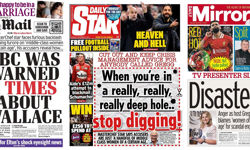Like most industries, digital publishing has its share of myths. Publishers often look at digital publishing and base their ideas on various assumptions that all too often remain untested, for example, “People will not read running text on a PC”, or that “digital sales will cannibalise print”. In some areas of publishing, notably fiction, these myths remain widespread.
So it is refreshing to discover a fiction-publishing website, www.millsandboon.co.uk, that throws these assumptions aside, and which has instead followed the lead of its customers to create a flourishing online community. The publisher is Mills & Boon, one of the best-known names in romantic fiction. So well known, in fact, that its distinctive pink covers are immediately recognisable, and it has even cheekily been suggested that one reason for the success of M&B’s digital initiative is that nobody can see what you are reading!
Mills & Boon, which is owned by Toronto-based Harlequin Enterprises, was able to take advantage of the Canadian parent company’s earlier experience of creating a digital delivery service, although the UK site was developed independently, with different functionality and with a UK-based web development agency (Mustard New Media). The result is one of the most exciting and successful ebook sites of any fiction publisher, with particularly strong community features. The new site has enabled Mills & Boon to discredit a number of myths about digital content:
* The majority of users read ebooks on their PC, not on a dedicated ebook reader;
* Many subscribers to the site buy both print and digital versions of the same title;
* Digital versions are published at the same time as the print edition, so subscribers can (if they wish) read in digital form only;
* There is a huge amount of free content on the site, and as a result readers buy more, not less;
* Users will post reviews, and even negative reviews can have a beneficial effect on the site.
I asked Tim Cooper, responsible for direct and digital marketing at Mills & Boon, about the key question: have digital sales taken away sales of print? “When we first went into digital, we wanted to lift both print and digital, and that has happened. We can’t say for sure if there is any cannibalisation or not. All we can measure is sales on the website – there is huge digital growth, and we know those sales are coming from a mix of existing and new customers.”
Why do Mills & Boon publish simultaneously in print and online? “We were the first in North America and the first in the UK to have 100% of the front list available digitally at the time of publication – and the customer feedback has been great.” The principle is to provide maximum access to the customer, which means multiple formats, multiple platforms (for example, selling via Amazon and other ebookstores), and multiple devices (ebook reader, PC, and so on).
Remarkably, the site even achieves the marketer’s dream – to sell the same content in two different formats. Readers purchasing either the ebook or the print are offered the other version for one pound extra, and the take-up has been good.
For Mills & Boon, the key criteria for the website were to have a simple download process, and to keep the prices the same as print. The website was created in association with design agency Mustard New Media. The storage and delivery of ebook content is provided by LibreDigital. They also supply the website functionality for the “Browse this book” capability both for Mills & Boon and for Harlequin (and 16% of customers who browse end up buying ebooks from the site), as well as providing the integrated bookstore function on the site. The final reason for choosing LibreDigital was because they were large enough to manage Mills & Boon’s impressive output of new titles – around seventy per month, which means they are similar in many respects to a magazine publisher rather than a trade fiction publisher.
For Mills & Boon, the customer is defined very clearly as a “member”. What makes Mills & Boon unique is that customers respond to the brand rather than to individual titles. Research has shown that the typical Mills & Boon reader is predisposed to reading online, and is an avid consumer.
How does the site work? New titles are released at the start of each month, across all ten of the Mills & Boon “genres” – readers can select their fiction by type, including Historical, Medical, “special moments”, or Intrigue. Books and ebooks are offered at the same price, and with few exceptions all titles are available both in print and digital form. The first chapter is always available to read on-screen. In addition, there is always some entirely free content available on the site, including some complete stories. In this way, a visit to the website always gives something to the customer, whether or not they are a subscriber. But of course, the website is not simply for selling. Websites serve multiple purposes: in this case, to provide information and brand support, and undoubtedly content is widely bought elsewhere.
What platforms are the books read on? This proved to be another surprise. A Mills & Boon user survey showed how their ebooks are read:
* 60% read on laptop
* 33% on ereaders
* 7% on mobile
Of course, as ebook readers become more widespread, these proportions will certainly change. But the figures show that already platform is not the obstacle many publishers have claimed. Plus, with the increasing adoption of ereader technology, there is the expectation that a new, younger audience may be found for the books.
Sales and distribution
Mass-market fiction publishers have a wide range of channels to distribute their titles. Mills & Boon operate a policy of providing to all available channels. For digital delivery, this is achieved by using the EPUB standard, an open ebook standard created by the International Digital Publishing Forum that is reflowable, that is, text is not fixed to the dimensions of a specific page, as is the case with (say) PDF. The EPUB standard is supported by 90% of the readers on the market. Mobile versions of the books are handled by Gospoken who distribute ebooks for downloading to Vodafone, Orange and T-Mobile.
Retailers are either supplied direct, for example Amazon, or via a print distributor such as Gardners or Bertrams. LibreDigital also does the conversion of files, as well as fulfilling ebook orders to customers who buy through the website, wrapping DRM (digital rights management) into the files in the process. They also push the digital content to third parties, both wholesalers and retailers. The policy of maximising access to content means there is a remarkable range of retailers: both Tesco and Waterstones sell M&B ebooks, as do WHSmith, Kindle, Kobo, Books on Board, Cool-ER, Books Etc. and others.
Web 2.0 features
Intriguingly for a publisher with only its own titles on its website, Mills & Boon provide a star rating system for titles. Doesn’t this put some would-be readers off buying a title? Well, answered Tim, the star ratings are a new feature. But this is an ecommerce site, he explains, and one of the expectations users have on an ecommerce site is to include comments and feedback. In any case, some of the feedback has been generated by readers in response to a negative review, and disagreeing with other readers’ comments helps generate a community. It is clear from the site that the reviews are by no means simple endorsements for the books: they spark a debate.
A further social feature of the site is the “Community” section, comprising interviews, forums and blogs by authors. Registration is required to post comments, but that doesn’t seem to prevent plenty of posts. In a nice populist touch, interviews comprise questions from readers put to the authors (“If you could be any of your heroines, who would you be and why?”).
Recommendations
Clearly, the Mills & Boon website is a powerful endorsement of the commercial opportunities of digital alongside print. Does Tim have any specific recommendations for publishers about to implement digital delivery? With the qualification that the recommendations may vary for different information owners, he had three specific suggestions:
1. Make sure it is easy to download the content.
2. Price sensibly: for Mills & Boon, that means keeping parity with print prices. It doesn’t make sense to make prices substantially higher or lower than print versions.
3. Provide the content in as many channels and formats as possible. Hence Mills & Boon titles are available through their own website, and via multiple distributors and retailers. This is not just an experiment to decide which one works; it faces up to the reality that consumers will buy from multiple sources.
As for developing the market, of course it helps if Oprah Winfrey makes Amazon’s Kindle ereader her “favorite new gadget”, but the Mills & Boon digital site shows that you don’t have to wait for celebrity endorsement to turn print into a highly successful (and widely enjoyed) digital publication.










